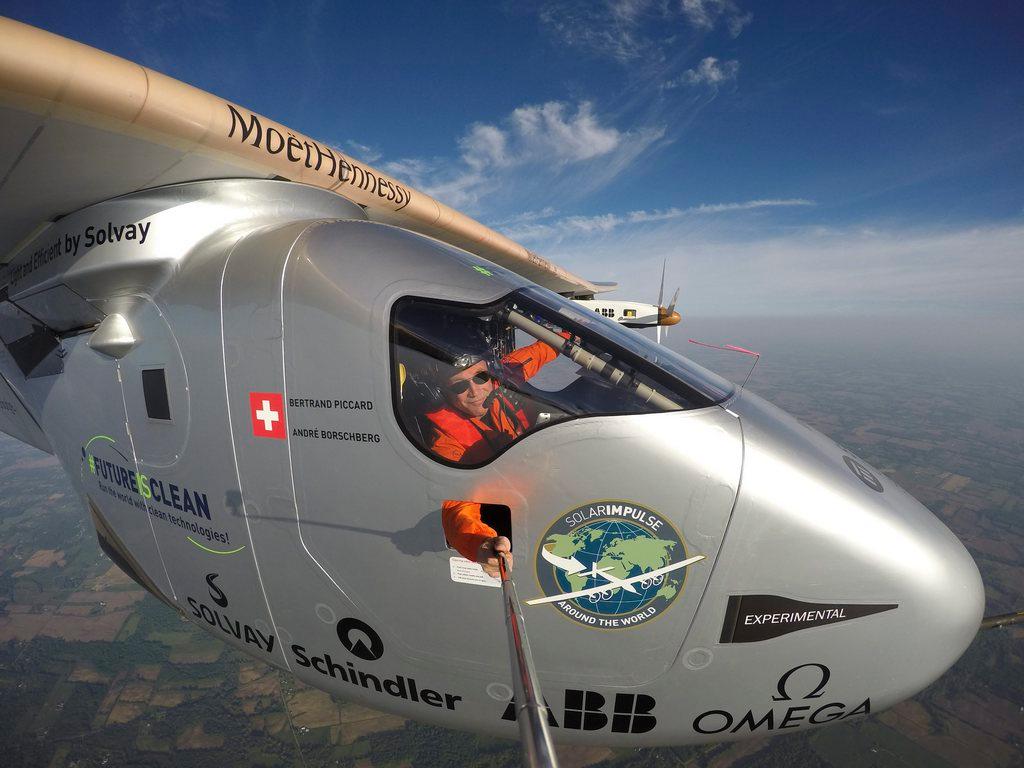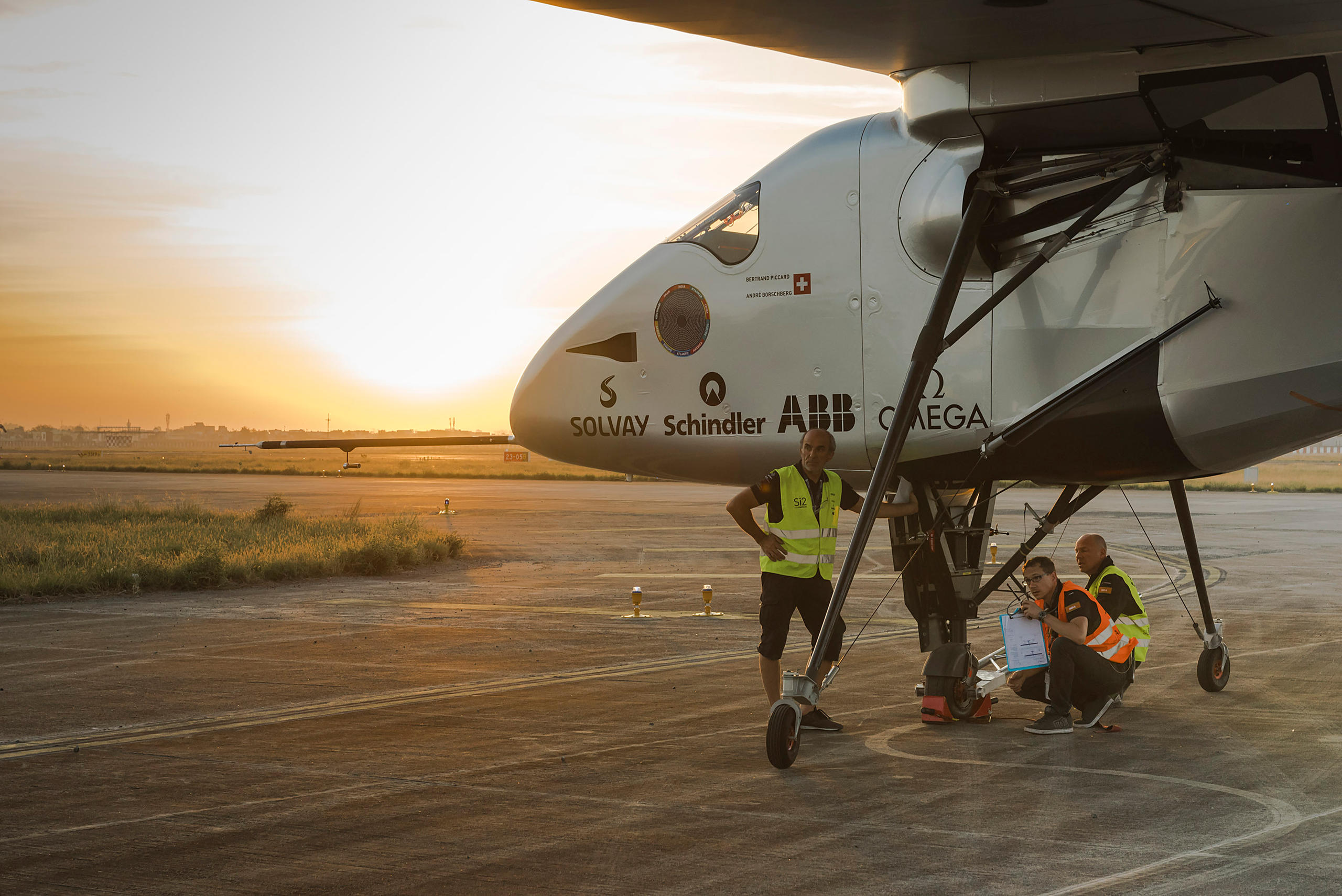Solar Impulse jets off on Atlantic crossing

The Swiss solar powered plane has taken off from New York in an attempt to cross the Atlantic Ocean. It’s the 15th leg of the round-the-world trip.
Bertrand Piccard is piloting Solar Impulse 2 in what should become the first solar and electric crossing without fuel or emissions over the Atlantic.
His partner André Borschberg and the team behind the operation will keep tabs on the aircraft’s progress from the project’s main hub in Monaco. On take off they were joined by the principality’s Prince Albert II.
The flight will be a lengthy one, the longest the Si2 plane has undertaken this year.
Ready for a 90h flight above the Atlantic from #NewYorkExternal link to #SevillaExternal link to promote #cleantechsExternal link ➡️ the #futureiscleanExternal link pic.twitter.com/BQaD3FE6EyExternal link
— SOLAR IMPULSE (@solarimpulse) June 20, 2016External link
One of the main challenges involved in the flight has been looking ahead to the weather. Reliably predicting it in advance for such a long duration while the plane is air bound is challenging, and a readiness to adapt to changes as they come is all part of the plan.
The team at mission control said in advance of Monday’s takeoff that there would “definitely be some changes in the route during the flight”, as they adapt to current weather conditions.

More
Why is weather so important to Solar Impulse?
With a wingspan of 72 metres, Si2 is a bit wider than a Boeing 747 Jumbo Jet. But instead of carrying 400 passengers, the plane only has room for a single pilot in its 3.8 m3 cockpit.
The previous leg of Si2’s flight around the world took just over five hours, setting off from Pennsylvania and landing in New York on June 11. The plane has been on its journey since March 2015.

In compliance with the JTI standards
More: SWI swissinfo.ch certified by the Journalism Trust Initiative











You can find an overview of ongoing debates with our journalists here . Please join us!
If you want to start a conversation about a topic raised in this article or want to report factual errors, email us at english@swissinfo.ch.